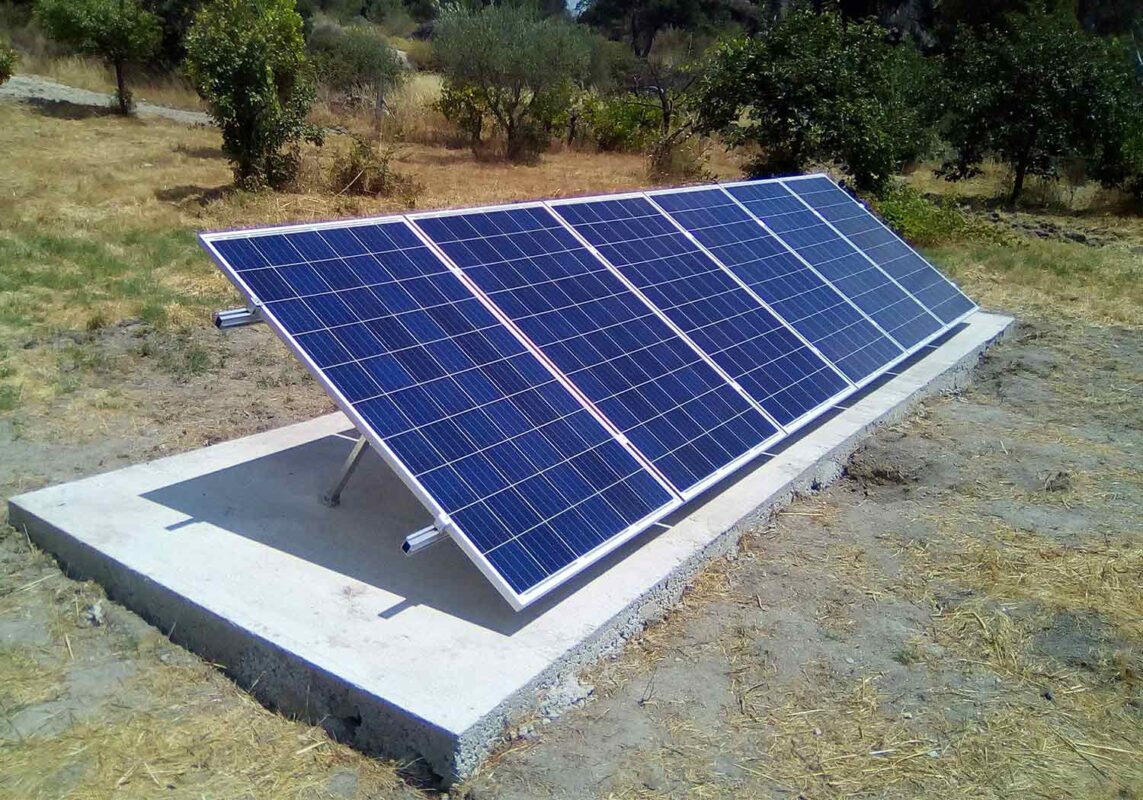DIY
OFF-GRID or ZERO FEED-IN Photovoltaic System?
What is an off-grid photovoltaic system?
It’s a photovoltaic system that is not connected to the national power grid and operates independently. This type of system is usually used in isolated areas, such as mountain huts, shelters, campers, and boats, where it’s not possible to connect to the power grid. The energy produced by the photovoltaic panels is stored in batteries and used to power the loads.
What is a Photovoltaic system with zero energy feed-in function?
It’s a photovoltaic system that is connected to the national power grid, but is configured not to feed energy into the grid. In practice, the energy produced by the photovoltaic panels is used directly by the system’s loads, without passing through the national power grid. This type of system is usually installed in homes or businesses that want to reduce their dependence on the power grid, but cannot or do not want to become completely independent. The zero energy feed-in function is implemented through an inverter that regulates the amount of energy drawn from the grid and the amount of energy produced by the photovoltaic panels, in order to ensure the energy balance of the system.
How do I choose which type of system to install?
The choice between an off-grid photovoltaic system and one with a zero energy feed-in function mainly depends on the user’s needs and the conditions in which the system will be installed. An off-grid photovoltaic system is suitable for situations where it’s not possible or convenient to connect to the national power grid, for example in isolated areas or in homes that are far from the power grid. In these cases, the off-grid photovoltaic system represents the only solution to have the necessary electrical energy to power the loads. On the other hand, a photovoltaic system with a zero energy feed-in function is suitable for situations where the user wants to reduce their dependence on the national power grid, but cannot become completely independent. Furthermore, this type of system is more convenient when the user wants to take advantage of government incentives for photovoltaic energy production, which provide the possibility of selling the produced energy to the national power grid. Ultimately, the choice between an off-grid photovoltaic system and one with a zero energy feed-in function depends on the user’s needs and the conditions in which the system will be installed. Before making the choice, it’s important to carefully evaluate the characteristics of both types of systems and compare the costs and benefits of each solution.
What is the difference between an on-grid inverter and an off-grid inverter?
The main difference between an off-grid inverter and an on-grid inverter with zero energy feed-in function is that the former is designed to manage energy produced by photovoltaic panels and stored in batteries, while the latter is designed to manage energy produced by photovoltaic panels and used directly by the system loads, without feeding it into the national power grid, while remaining connected to the national power grid. The off-grid inverter is a device that converts the direct current produced by photovoltaic panels into alternating current, used by the system loads. Additionally, the off-grid inverter also manages the charging and discharging of batteries to ensure energy autonomy of the system. The off-grid inverter is designed to function independently from the national power grid, as the off-grid photovoltaic system is not connected to the grid, or in some cases, with specific inverters, it can also be grid-connected. On the other hand, the on-grid inverter with zero energy feed-in function is designed to manage energy produced by photovoltaic panels and used directly by the system loads, without feeding it into the national power grid. The inverter with zero energy feed-in function is able to regulate the amount of energy drawn from the grid and the amount of energy produced by photovoltaic panels, in order to ensure energy balance of the system. In this way, the photovoltaic system can also function in the absence of sunlight, using energy drawn from the national power grid. In summary, the difference between an off-grid inverter and one with zero energy feed-in function lies in their ability to manage energy produced by photovoltaic panels in different ways, based on user needs and system configuration.
Here is a list of essential components needed to build an off-grid photovoltaic system and a brief explanation of their functions:
- Photovoltaic panels: photovoltaic panels are devices that transform solar energy into electrical energy. They are made up of photovoltaic cells that produce direct current.
- Storage batteries: batteries are the component that stores energy produced by photovoltaic panels. They are used to ensure energy autonomy of the system, especially in case of absence of sunlight. Batteries used for off-grid systems are usually lead-acid or lithium batteries.
- Off-grid inverter: the off-grid inverter is the device that converts direct current produced by photovoltaic panels and stored in batteries into alternating current used by the system loads. The off-grid inverter is designed to function independently from the national power grid, as the off-grid photovoltaic system is not connected to the grid.
- Electrical cables: electrical cables are used to connect various components of the system, from the photovoltaic panel to the batteries, from the inverter to the system loads.
- DC and AC electrical panels: to ensure safety and proper functioning of the system
- Supports for photovoltaic panels: supports for photovoltaic panels are used to fix the panels to the support structure of the system, such as the building roof or a dedicated metal structure.
- Installation tools: to build an off-grid photovoltaic system, specific tools and equipment are also needed, such as wrenches, drills, screwdrivers, terminal blocks, etc.
Contact us for more information:
[contact-form to=”info@io-solar.local” subject=”Form di contatto blog post offgrid-ongrid”][contact-field label=”First Name” type=”name” required=”1″][contact-field label=”Email” type=”email” required=”1″][contact-field label=”Phone number” type=”text” required=”1″][contact-field label=”Message” type=”textarea” required=”1″][/contact-form]